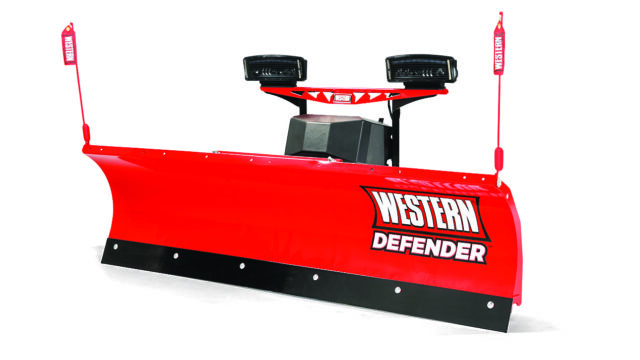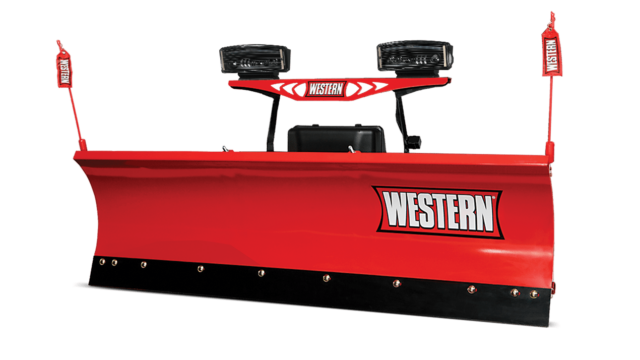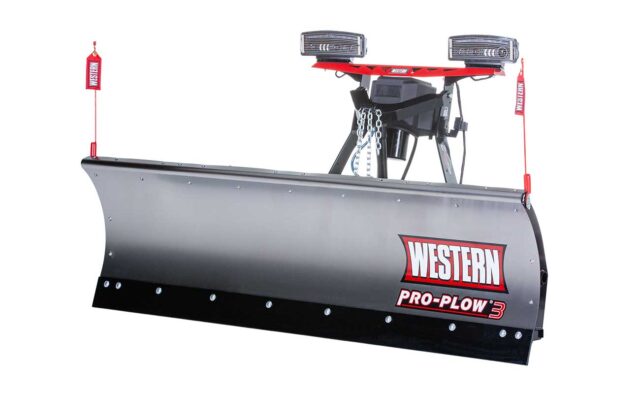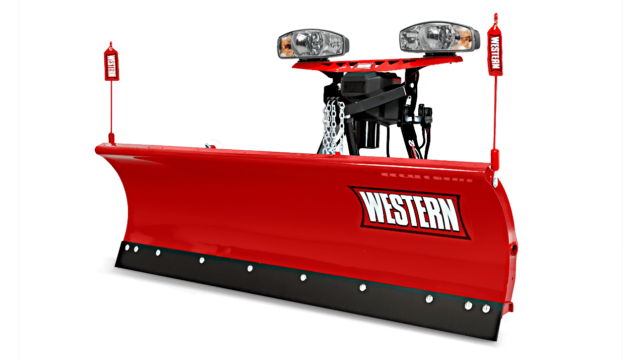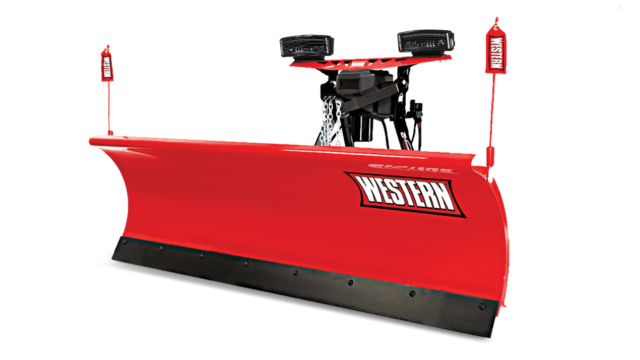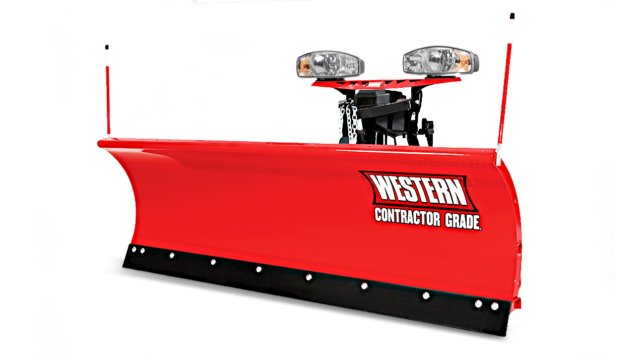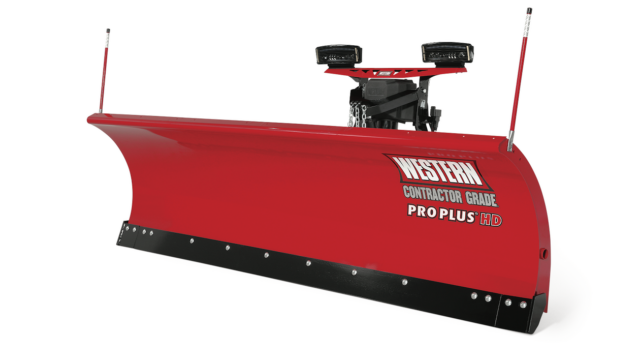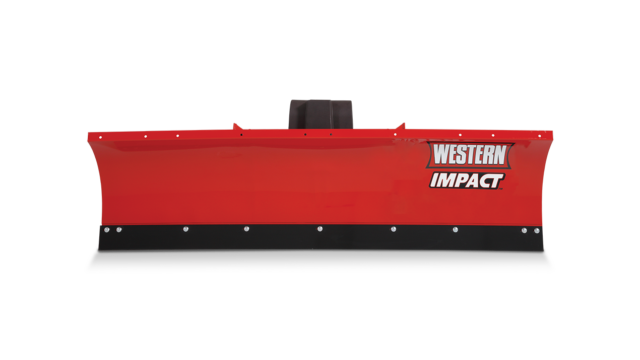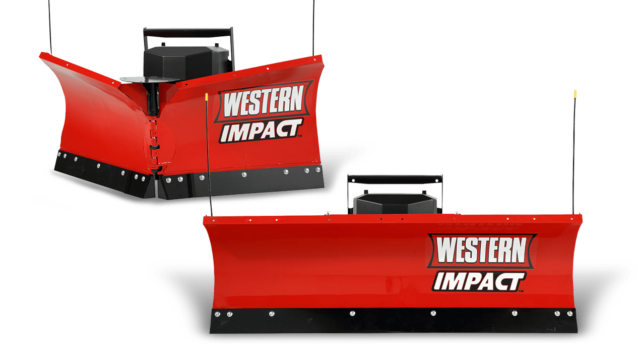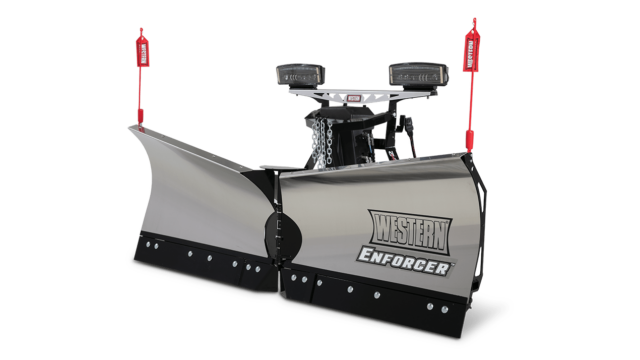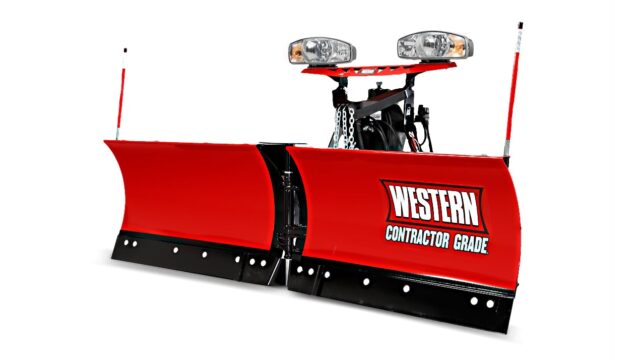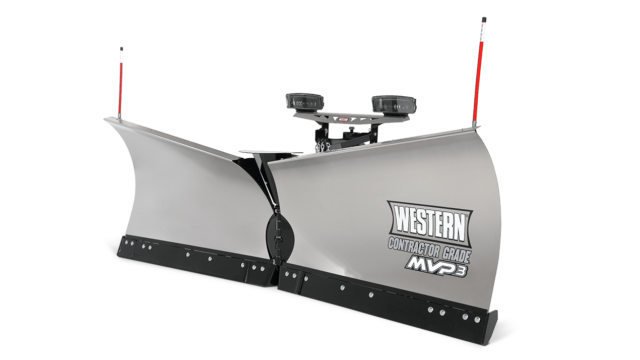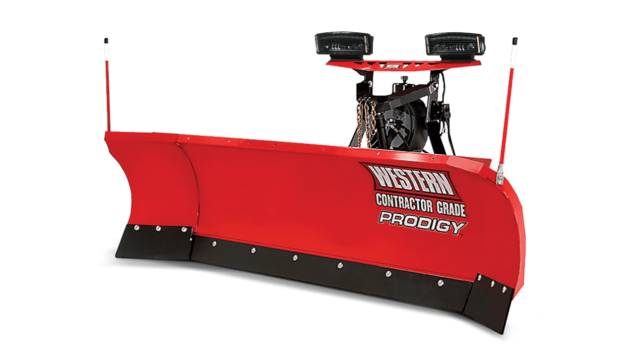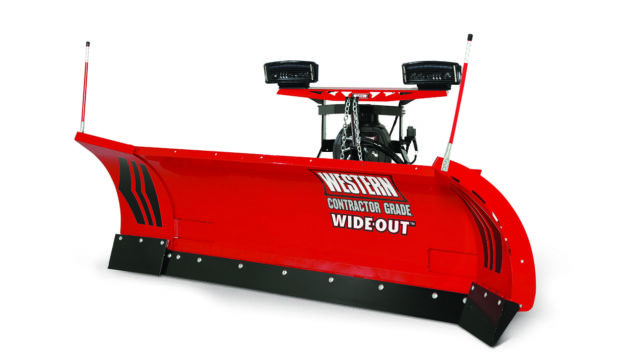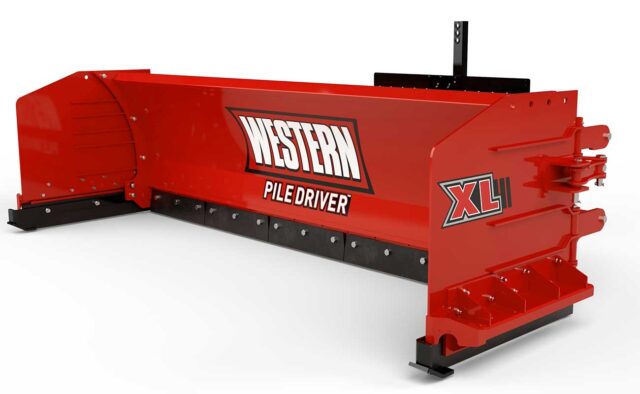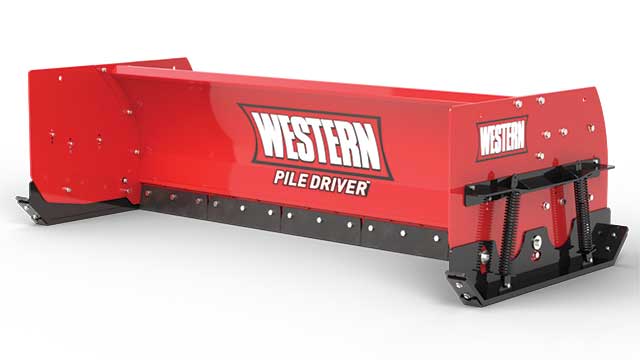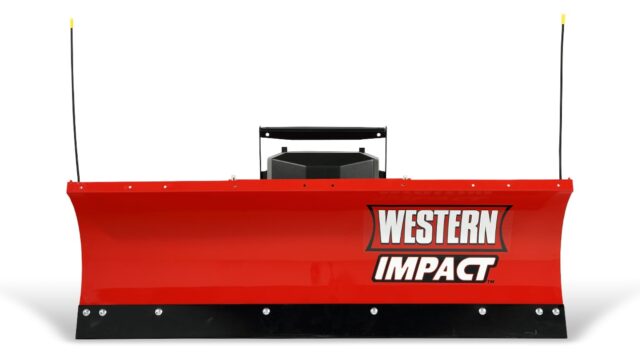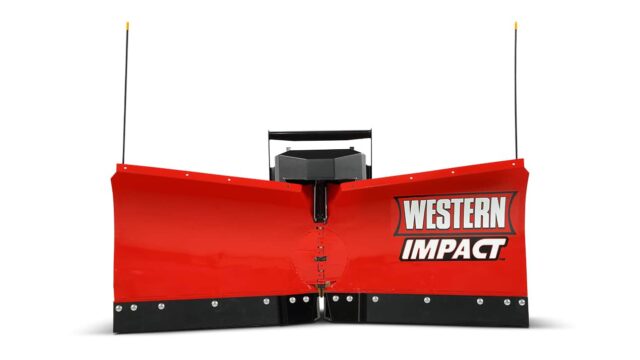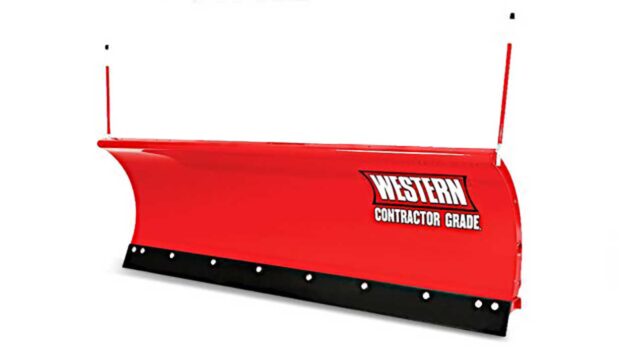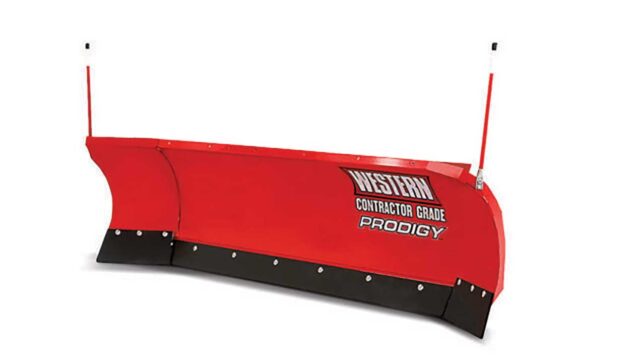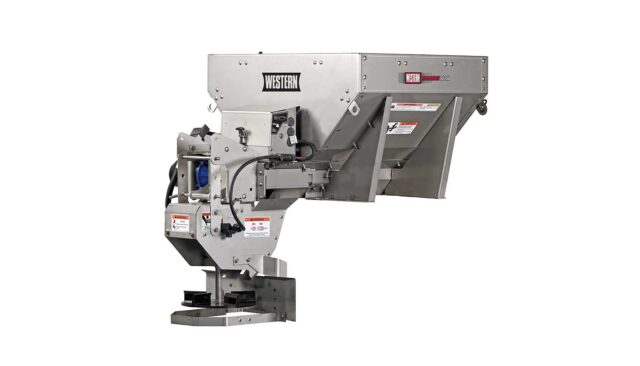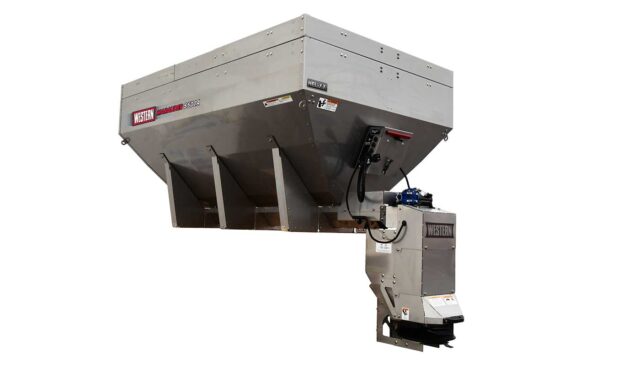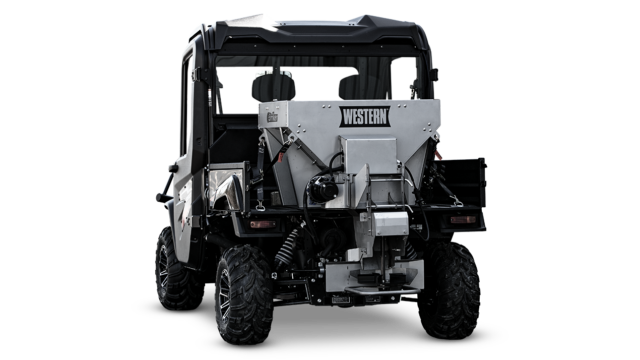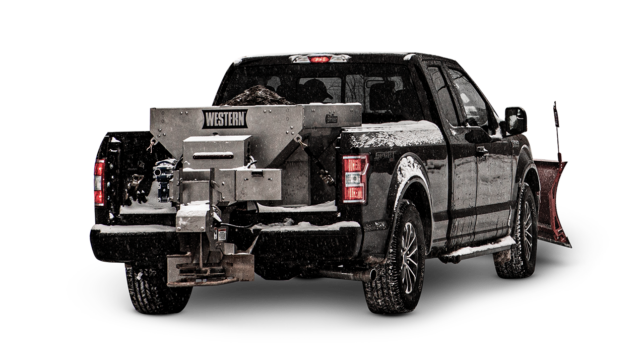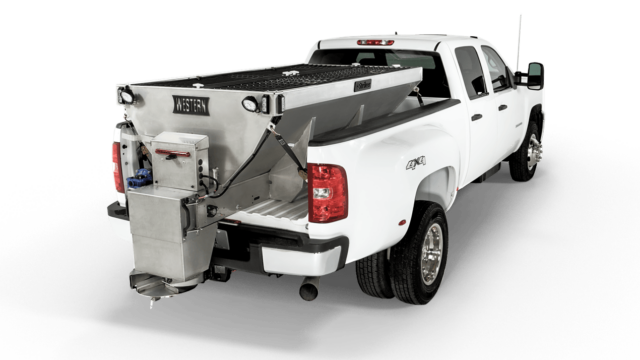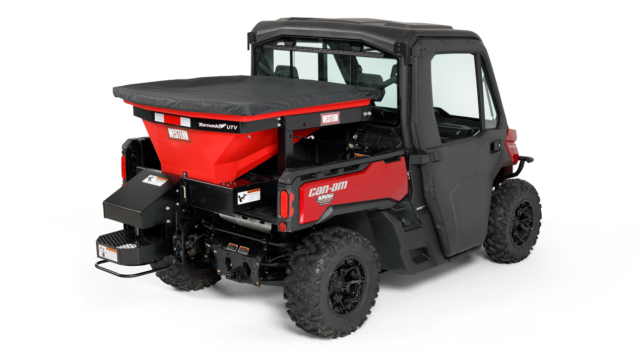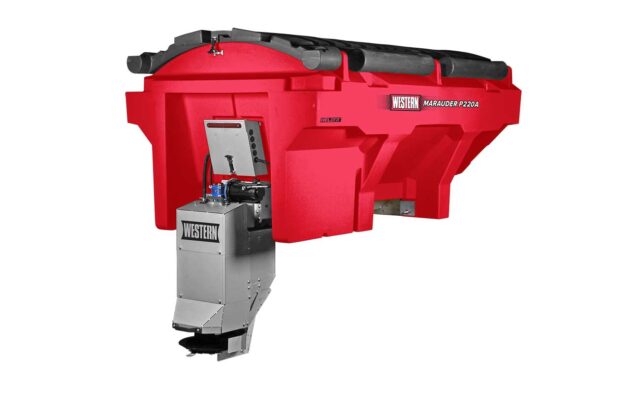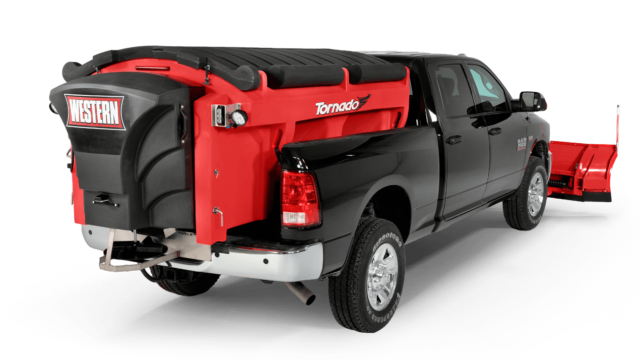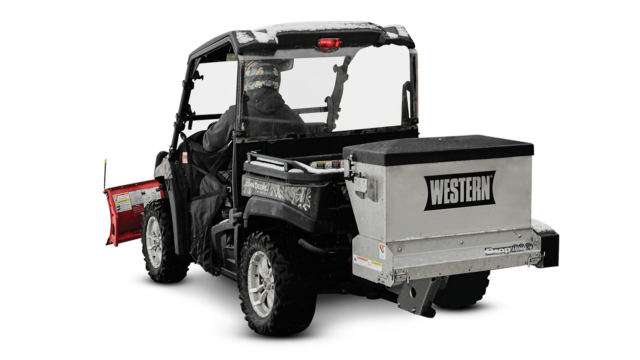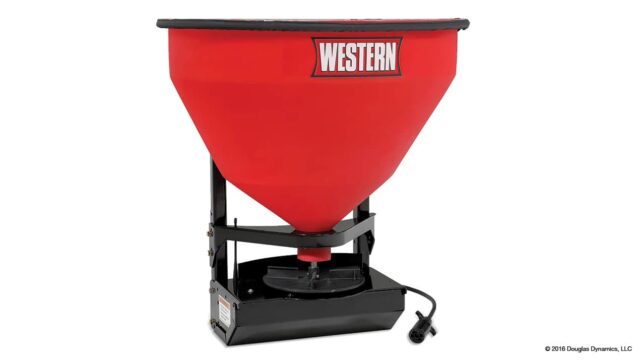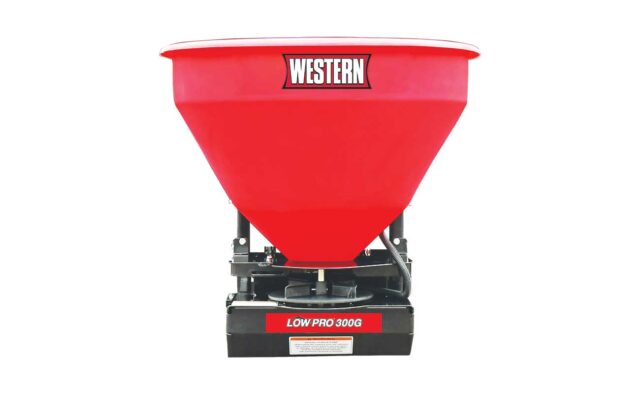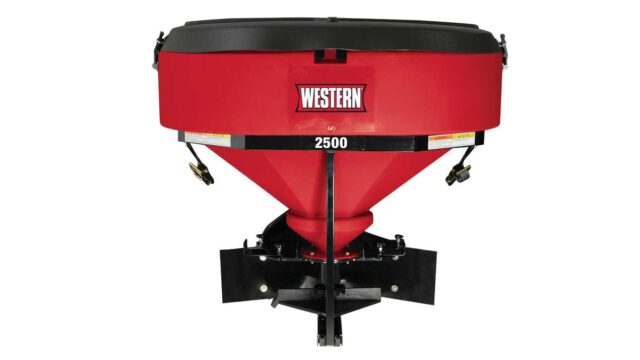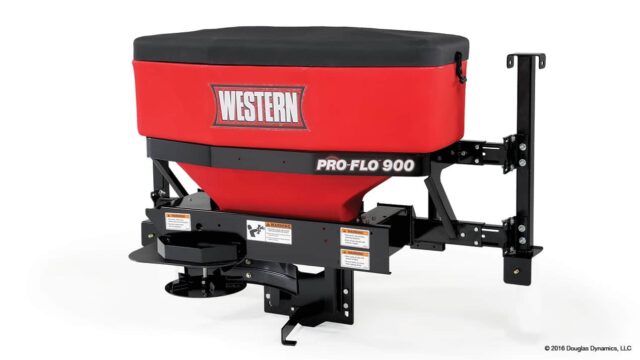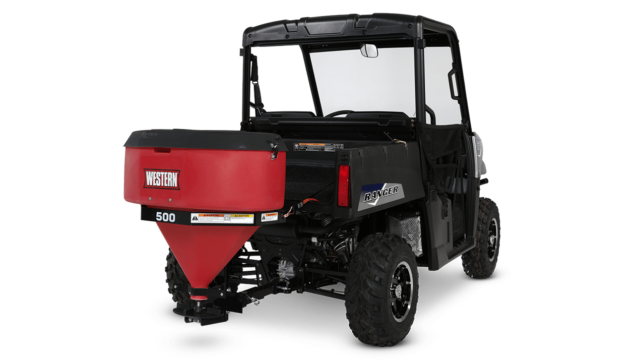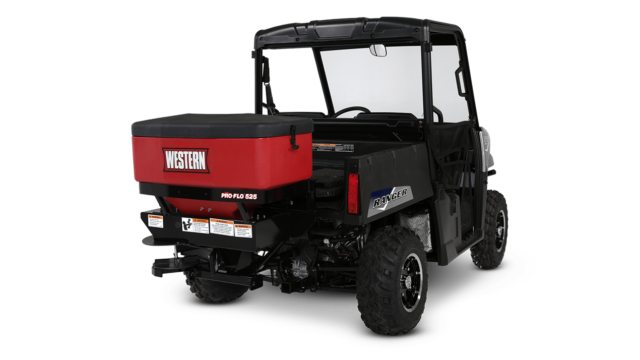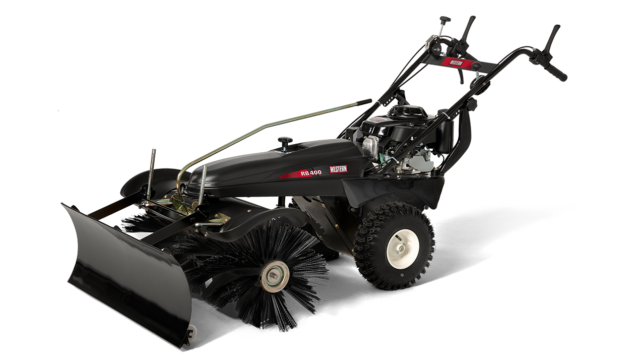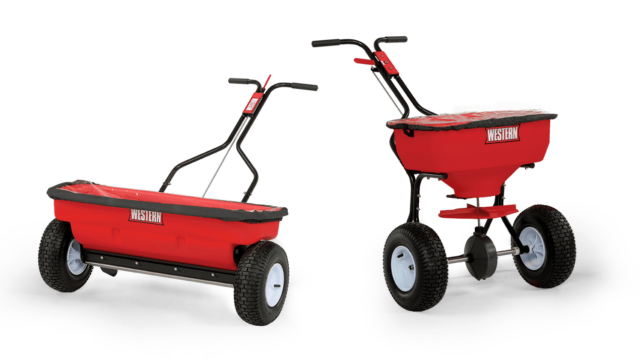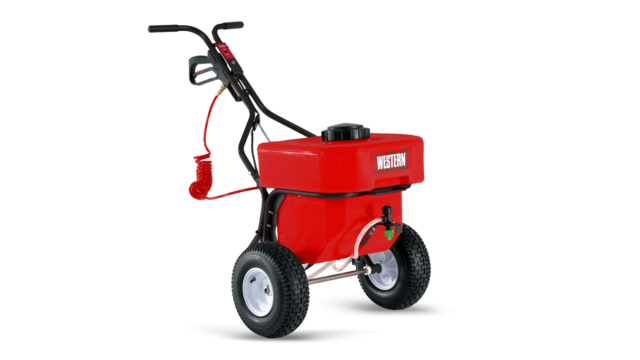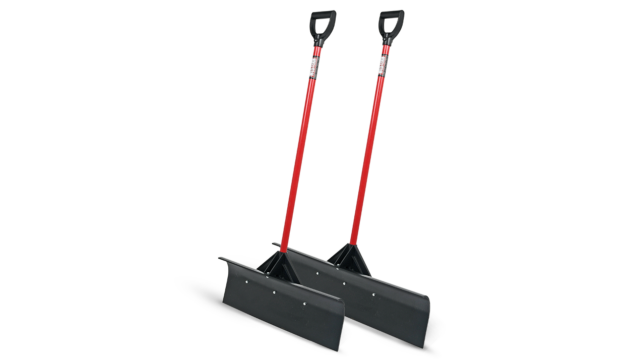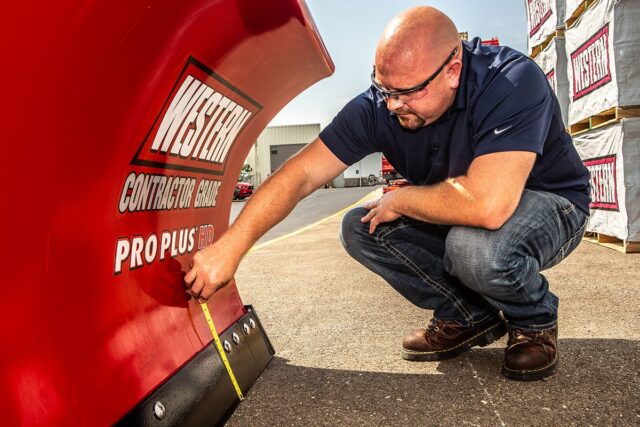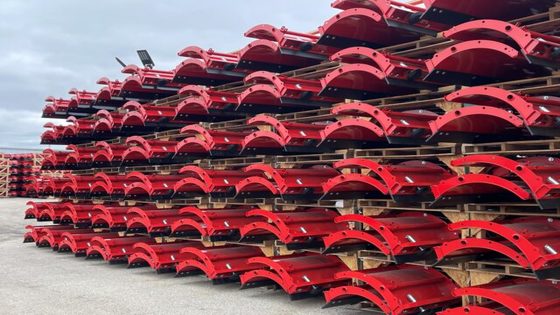Resource Articles Category: Business Advice
Insider Tips on How Contractors Win the Bid & Stay Profitable
Created September 20, 2022
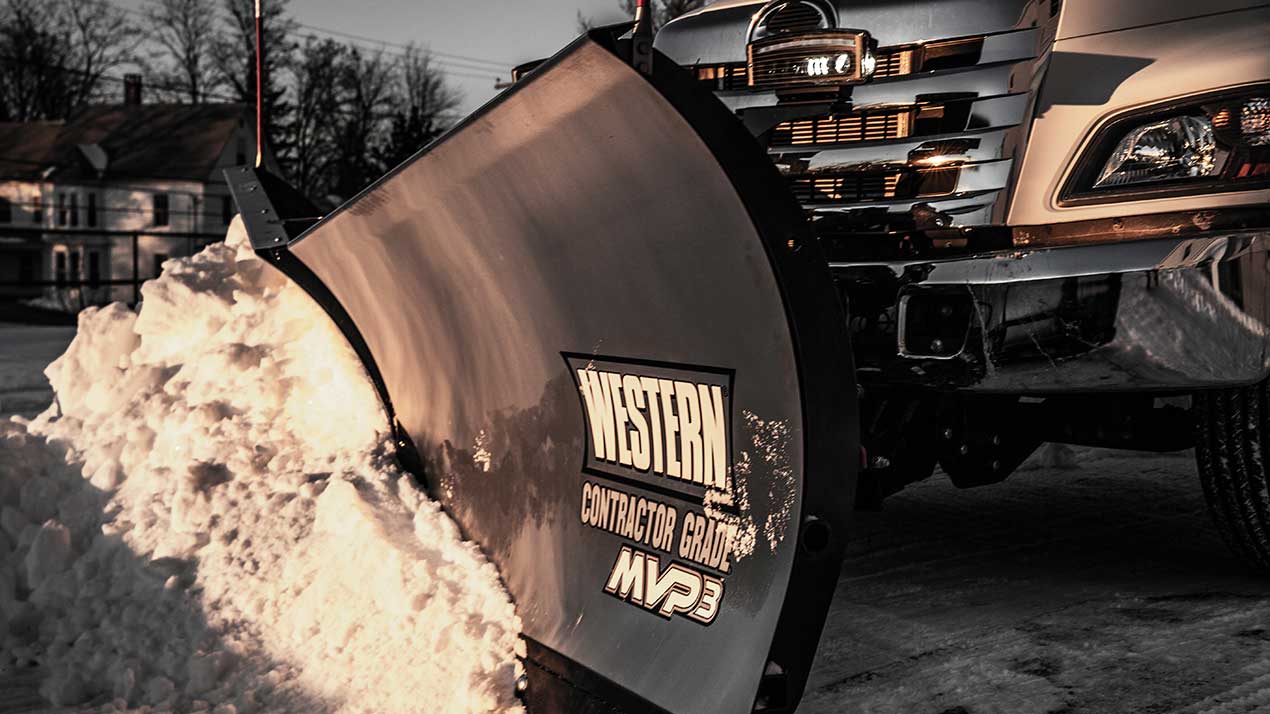
All snow and ice contractors want to know the best way to bid, and of course stay profitable. Unfortunately, there is not one single right answer because it differs from operation to operation. The best way to learn is to look back at past seasons and evaluate what went right and what went wrong. It all comes down to managing contract types, predicting snowfall, and estimating accurate bids to remain profitable. There are tools to help make these bidding decisions easier and utilizing different WESTERN® equipment can maximize your operation’s efficiency to generate more profit.
Predicting Snowfall
Understanding the average amount of snowfall in your area is a major part in estimating accurately. Using weather services like WeatherWorks, NOAA, and Weather Command™ give you an advantage when bidding and choosing contracts. WeatherWorks provides a wide range of weather solutions to ensure you are delivering the best service and maximizing profit. Using multiple services allows you to get the most accurate estimate at what to expect for incoming snow events.
Having access to this data will allow you to bid confidently, for both, salting and plowing services. Take advantage of multiple weather services to compare reports, analyze statistics, and get live updates during snow events to stay prepared and profitable.
Estimating Bids & Software Tools
Many factors play a role in bidding accurately. You’ll want to consider several variables to ensure you are not losing money and charging appropriately for your services. Consider the following:
- Region
- Property Area Inputs
- Equipment Hourly Rates
- Equipment Production Rates
- Equipment Efficiency Factors
- Ice Control Material Rates
- Ice Control Application Rates
- Weather Data
- Contract Options
- Level of Service
Snowbidder is a free estimator tool that plugs in these variables and calculates an accurate amount for what you should be charging for your services.
Using Snowbidder will allow you to get your estimates done faster than the competition. Instead of taking days or weeks to send a bid, you can easily get proposals out in under 24-hours. About 75% of snow proposals are awarded to the first bidder, so using this tool can greatly impact the number of bids you win due to automating this process.
Bidding Timeframe for Snow & Ice Contractors
Even though some might assume the bidding process takes place in fall (right before the season kicks off) it actually starts a lot sooner than that.
Post-Season Review
Experienced contractors start locking in contracts in spring as soon as the prior season ends. This is when your great service quality from the previous season is top-of-mind, and your clients will happily renew their contract.
Managing Your Portfolio
The quicker you can get client contracts set up, the easier it will be for you to put together an action plan. Analyze how the previous season went and decide what to do with your client portfolio. Some accounts may have gone smoothly and require no changes to the contract. Whereas some other accounts may need to be fine-tuned to provide the proper level of service. Lastly, reflect on difficult clients or accounts and determine how you would like to move forward.
Professionally Letting Go of an Account
When an account is giving you more headaches than it is worth, it is time to let it go. There may be better opportunities out there that will be more profitable. The best way to go about firing a client is to be respectful and professional. Even if they were difficult, you could just explain that you can no longer give their account the attention it deserves or that due to demand, your rates are going up (which usually ends in a mutual breakup when they don’t agree to the new price). Just remember, it’s important to be direct and polite because your reputation is important.
Filling The Gaps
If you decide to eliminate clients, now you may have space to add more. Around the same time as you are reviewing your portfolio in spring, you also want to begin thinking about new clients. Start with your loyal customers first and ask them for referrals. This is also the perfect time to recruit some new accounts who may have had bad experiences with their current contractors.
Equipment Evaluation
Winters can be brutal, and your plows and spreaders deserve to be taken care of. After every season, analyze your equipment and decide whether you need to perform regular maintenance and repairs, or if it’s time for an upgrade. Making an investment early can save you a headache down the road when the pressure is on during the season. Having reliable equipment will keep you moving and profitable, while also ensuring safety for your crew.
WESTERN snowplow and spreader accessories can also help make your operation more efficient and get more jobs done faster. Especially with the highest quality equipment. When bidding on a property, your efficiency will be a huge factor in what you need to charge to be profitable. The type of snow and ice control equipment you own may be the one aspect that won the account over the next company.
Wining The Bid
You want to win the bid by the end of summer. This will give you plenty of time to view the property, stake and map out obstacles, and plan for the upcoming season.
Additionally, you can see if you have spots left that can be filled with smaller businesses or residential accounts. Smaller businesses and residential customers tend to wait until fall to look for service. If you already have your big accounts set up, you can add these additional filler accounts in the fall if you have the space.
Note: Google Maps is a great tool to use and is preferred by contractors, images are up to date to accurately show current state of the property.
Winter Service Contract Types
When choosing a contract to bid, the main goal is staying profitable, but you also want to consider the type of customer you are working with and their individual needs. Residential contracts are typically more straightforward and simple. Commercial contracts tend to have more diverse property types and requirements. There are many different contract types that fit these unique needs to stay profitable. You want to diversify your client portfolio, so everyone wins.
Keep in mind, residential customers are paying for service whereas commercial clients are really paying for the insurance of having snow removal. Commercial properties depend on your services to run their businesses and ensure the safety of their employees and customers.
Contract Types Include:
- Per Hour: You charge per hour worked. This tends to be viewed as fair from both contractor and customer perspectives. It can be hard to accurately keep track of travel time, rates of multiple workers, specialized equipment, and materials. Keep in mind that depending on snowfall, there is no guarantee you will be profitable if it is a light snowfall season. This contract also provides unknown to property owners from a budgeting perspective.
- Per Inch: This type of contract is charged on the amount of snowfall that occurs. Other services such as de-icing, snow stacking, and relocation can be included or charged separately. If there is a light snowfall season, you can still profit off these additional services. Keep in mind if it is a heavy winter, this could result in high prices for customers, and they may not see this type of contract as fair. Make sure to state in the contract an agreed upon 3rd party location where snow totals are being measured.
- Per Push: Per push is charged based on the number of visits. This is the most common type of residential contract, as it is easy for a residential customer to verify. The number of equipment and de-icing materials used affects the total cost per push. Depending on the severity of the season, profits can be very high or very low. This may not be a great contract to use for larger properties where a push can be hard to define, and property owners are often located off-site. Keep in mind it may be hard to cover business costs such as travel time, materials, and maintaining equipment if the season has low snowfall totals.
- Flat Rate Seasonal: This is a flat rate that is charged for the entire season and usually paid up front. Other services such as de-icing, relocating, and stacking may be charged for large storms in addition to the set rate. A contractor may want this type of contract to ensure they are making a profit and can cover business costs. Depending on the amount of snowfall, the contractor or customer may feel cheated. It’s important to understand past snowfall averages to come to an agreement on a fair price.
- Adjustable Seasonal: This is an agreed upon price up to a certain amount of snowfall, after that amount is reached an additional fee will be charged. Also, if snowfall is below a certain amount the customer would receive a refund or credit on future services. This can be adjusted based on what you and your customer think to be fair based on historical snowfall data.
- Retainer Plus Service: This type of contract charges the customer a set fee per month and is then combined with another type of contract such as per push, per inch, etc. as those services are performed. Make sure to discuss what is thought to be fair with the customer as the monthly fee.
Not sure which contract type is best for you? Learn more at the Snowfighters Institute with leading educational and networking events for snow and ice management professionals.
In the end, understanding the six contracts and choosing the right one that works for you and your customers will help retain good clients. To best maintain profitability, a blend of contracts will be your best bet. Reflect and evaluate after each season and keep accounts profitable with the help of various tools.
Looking for additional information on bidding? Grow the Bench offers some free classes designed to grow and develop snow professionals
You may also be interested in these additional articles
- How to Determine Where to Pile Snow
- Safe & Efficient Snow Stacking
- Estimating Spreader De-Icing Material
The Ultimate Recruitment & Retention Guide for Snow & Ice Contractors
Created November 16, 2021
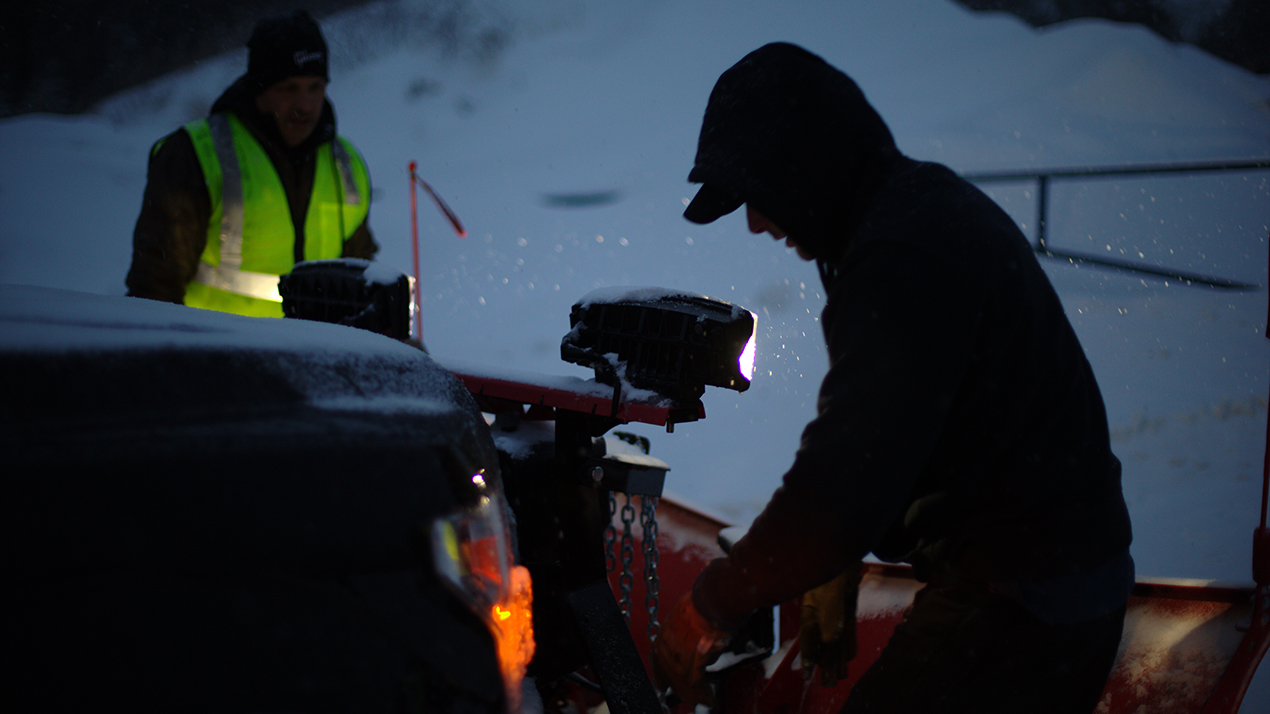
Being in the trades is demanding and sometimes goes underappreciated. Snowplow drivers must be on call for emergency snowstorms, out braving the elements, and working long hours to keep the roads safe for others. It’s a difficult job, yet it can be rewarding—and sometimes even fun. Working for the right employer can make the difference between loving your job and looking for a better one. Here’s a few things business owners and managers should remember while recruiting and retaining snow and ice control operators this season.
Level Set Mindset—State of Industry
It’s no secret that labor is hard to come by these days and all businesses are facing the challenge of finding quality employees. There is no easy button for recruiting, which means retaining existing employees is more important than ever before. In early 2021, the Bureau of Labor Statistics reported that 4.3 million people have left the labor force since the start of the pandemic.
These front-line workers don’t have remote work luxuries like some sales or office staff may receive. As a business owner, it’s important to create a safe environment that your employees enjoy being in. Why should they want to come to work every day?
(HINT: the answer shouldn’t just be for a paycheck).
Build & Retain Your Loyal Employees
The biggest reason for turnover is usually for a better opportunity with improved work/life balance. People want to work at a place where they are challenged, valued, recognized, and can find meaningful work—and yes, competitive pay is important too.
Understand your teams needs so they don’t ever feel like their needs aren’t appreciated or being met. By being proactive and offering this type of environment to existing employees, it will benefit your retention efforts.
Here’s a few other ideas to help retain your valuable skilled workers:
1. Create a Positive Culture
Design your team and your space to be productive and pleasant. A positive culture starts from the top down. When employees feel like what they do matters and it’s appreciated, it creates loyalty that’s hard to find elsewhere. Take the time to build those relationships within your team. It’s harder to say goodbye to a boss you like working for.
People often leave when they have no ties to the company and no coworkers they enjoy being around. Start daily group stretches, discuss high-level initiatives, hold luncheons showing appreciation, reassure the team that you’re all in this together, offer service awards, and make a big deal about each person’s dedication to the company.
2. Offer Cross-Training & Job Rotations
Snowplows are exposed to a lot of wear and tear that will eventually need service. If you have the capacity, having an on-hand mechanic is a no-brainer. Finding a mechanic willing to cross-train your plow drivers is even better. Training drivers to fix their plow in the field will greatly reduce down time for repairs. It will also give your drivers an advantage they wouldn’t have had otherwise, and your mechanic will have a chance at mentoring and training others.
Job rotations are more of a long-term cross-training opportunity where two employees switch roles for an extended period of time. Having to walk in someone else’s shoes creates awareness and appreciation between departments and can also bring new solutions to the table by looking at a problem from another perspective.
Giving high performers a chance to experience more opportunities within the company can benefit you in multiple ways. Not only will it help strengthen the knowledge of your team but will also keep them happy, feeling fulfilled, and actively building their own career that can impact your company’s growth in return.
3. Conduct “Stay Interviews” & Promote From Within
Annual reviews don’t provide the opportunity to correct behavioral issues and an exit interview is too late to give praise and show appreciation for an employees’ efforts—it’s also too late to make an unhappy employee stay.
Resignations and turnover happen when the company is not stable and there’s a lack of leadership. Once employees see a pattern, they start wondering what else is out there. Having a revolving door of employees also creates frustration and burn out by those that have to pick up the slack and train coworkers multiple times, feeling like the responsibility all falls on them.
Take the time to hold “stay interviews” to gain ideas on how to re-energize the team, see how things are going, and let them know their voice is heard. Treat each employee like a new hire you want to impress. Engage on a quarterly or bi-annual basis to understand where each employee is personally and professionally, learning who they are as a person. Challenge those who want the additional experience and find it rewarding. Find out what is important to them, what makes them feel proud, what their interests are—and then make a point to deliver on that.
4. Rethink Your Competitive Benefits
There are some benefits that are too hard to pass up. Think of what you can offer that could move the needle, ask your team what matters to them. A good salary, health insurance, and a vacation plan are almost requirements these days.
Think beyond that: profit sharing, team building activities/parties, a day of stewardship, work flexibility during slow times, a warm meal at the office during storms, or perfect attendance awards are only a few ways to improve morale. There are numerous books on how to get creative with rewards and motivating employees without breaking the bank.
Define Your Business Differentiation Statement
In this competitive landscape—whether you’re recruiting or retaining—you need to make it clear what sets your company apart. Why do people want to work for you vs the competition? Other than competitive pay and a nice benefits package, what makes your snow and ice control operators dedicated to your company?
Set clear expectations up front and recognize good performance often. Have a motto—something inspirational, using simple words that are easy to memorize, embody, live, and teach. Revisit it regularly and integrate it in everything you do.
Superior Equipment Can Make the Difference
Most people are not looking for a labor-intensive job—and there’s only a small age group that is healthy enough to get it done efficiently. That’s why over the years, technology has grown to develop walk-behind, ride-on, and UTV powered equipment to get the job done faster and safer. Having powered machines reduces the amount of time and people needed to get the job done, which is especially important when looking for sidewalk crews.
Superior equipment has additional benefits outside of just making the job more tolerable.
- Who doesn’t want to use the newest equipment in the industry? Making the job fun again and less labor intensive is enticing for a lot of snow and ice professionals.
- Having technologically advanced equipment can even allow you to monitor your crew and material usage, giving you the data needed to reduce costs and increase efficiency.
- Powered equipment results in less injury claims by ensuring sidewalk crews are more protected and not as exposed to the elements where they are prone to hypothermia, frostbite, or even being hit by a car.
Don’t overlook preparation or quality of equipment either—these things matter to your team too. Making sure the plowing vehicles are in good working condition, maintained regularly, and fully stocked with parts and tools in case of a breakdown. This can greatly reduce the stress of the job.
Recruiting Outside the Box
The job market is not like it once was. Job seekers have the advantage and employers need to adapt. Here’s a few tips on where to find the right people and how to think outside of the box with your recruiting efforts.
1. Who Has Your Labor?
Every industry is experiencing different highs and lows. You want to keep your full-time employees busy, or you may lose them for good if they find a new job during a temporary layoff.
Find out where you are short on help and look to outside industries for relationships where you can both benefit. Needs change and being able to adapt and build cross-industry partnerships is when you find yourself rising above the rest.
2. Who is Being Overlooked?
Get creative about how you think about the labor pool and where you can find good workers. Tap into populations that may be overlooked by others and break through the noise. By 2022, a huge portion of the working population will go into retirement, leaving us two million workers short in manufacturing and labor. It’s an all hands-on deck situation where any additional help is beneficial.
Driving a plow gets more efficient over time, but with a little focus and diligence, almost anyone can be trained to use a snowplow. Some people go out looking for an autonomous job where they can work independently and gain freedom, which is exactly what you get with snow and ice control. Being a plow driver can also be fun to use new, powerful equipment. It can be satisfying to watch a buried lot become clear with each pass.
Don’t ignore retirees, high school and college students, people on parole or work release programs, women, and immigrants. You can build loyalty and credibility by giving someone a chance and seeing something in them that no one else did.
Even though full-time employees can be seen as more reliable, don’t bypass someone looking for part time work. It could end up being a smart business decision since part-time employees can help ease the workload but don’t require benefits like health insurance and a 401K.
Some contractors are just looking for seasonal work in the winter and additional bodies can help your bottom line drastically. Having the personnel to be able to switch out crews during heavy storms will also boost morale by keeping your “starters” more rested and alert. Some subcontractors even come with their own equipment so you can gain seasonal help and expand service capabilities at the same time.
3. What Are Employees Saying?
Employee reviews matter just as much as customer reviews do—88% of people trust online reviews as much they do a personal recommendation. Use social media and the digital world to your favor. Create employee video reviews on your smart phone and post it to your website and social media. You can even run paid ads for employment and target a certain demographic you’re trying to reach. You may catch the attention of someone who isn’t even actively looking for a new job but could motivate them to apply.
4. Do You Offer Referral Bonuses?
Loyal employees can be your best advocates. Offer an incentive when they recommend your company to friends and family who are looking for employment. People generally want to work around other people they know and like.
How to Write the Perfect Job Description
All companies can write a job description—but writing one that inspires people and makes them eager to apply takes a bit more effort. Stay away from the traditional, dry company overview with required qualifications and the same benefits everyone else has.
Instead, ask questions to invigorate, inject some personality and make it conversational. You can do this by sharing employee testimonials and creating excitement around your culture. Why would you want to work there?
- Be transparent. Explain if it’s full-time, part-time, or seasonal and what the potential is for growth. Include a competitive pay range up front so people understand what they are applying for. If it’s for an entry level job, mention that you’re willing to train. It could be exactly what someone is looking for as they’re trying to switch industries and find a new career. Including these details in your job description will help set initial expectations and not waste your time with people who are looking for something different.
- Utilize keywords. This isn’t just important for optimizing your website for search engines. Utilizing keywords can work for job listings as well. Make sure to include important keywords so potential employees can find you easier as they are searching online for opportunities.
- Share it. Once you have your description written, post it anywhere and everywhere. Tell your team about it so they can either apply for it internally or help you get the word out. Make sure digital is at the forefront of your recruiting efforts in order to reach more people faster. Your website and social media pages are a good start. There’s also free job boards like Indeed or Simply Hired. Other boards charge a fee, like ZipRecruiter, but the paid sites can aggregate your post to multiple job boards at once.
Keeping your current employees happy can be your best recruiting method—and the better you take care of your employees, the better they will take care of your clients.
Looking for a career at WESTERN®? We’re hiring! Our employees work in a team environment to create quality products—It’s what we do together that sets us apart. We offer competitive salaries and a comprehensive benefit package. Apply Today!
Post-Season Snow & Ice Business Review
Created April 30, 2021
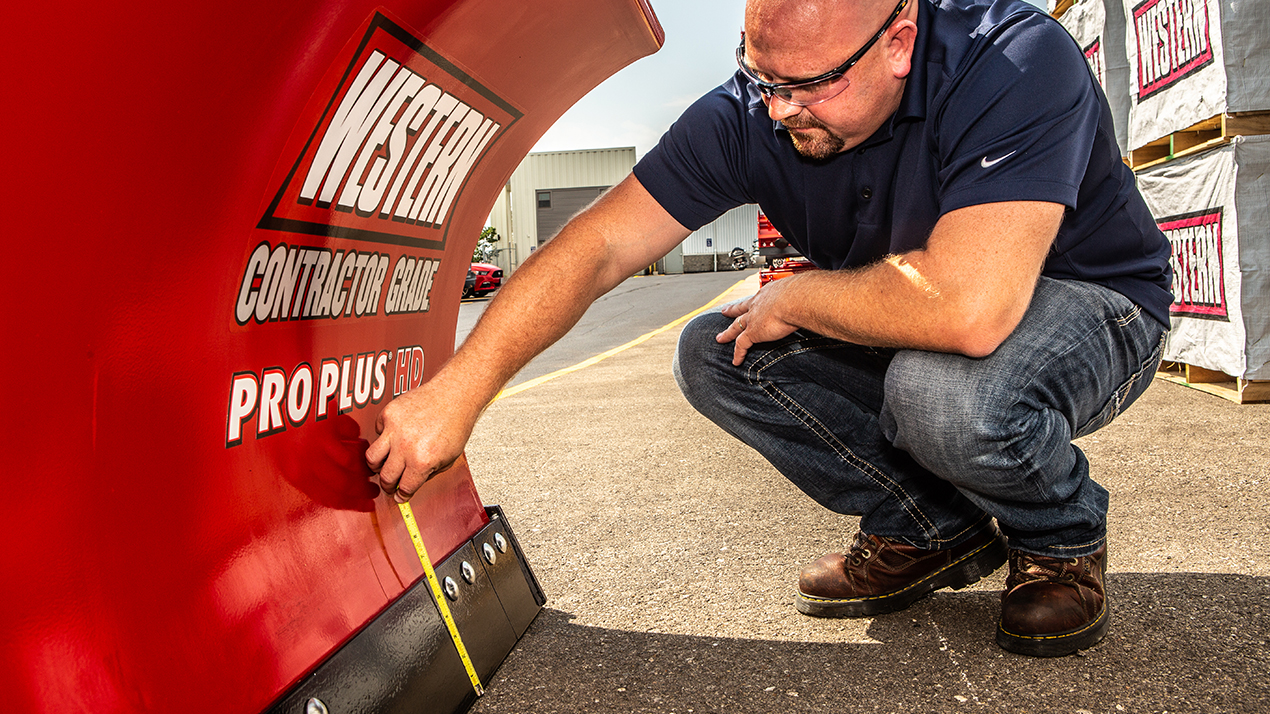
We’ve survived another winter season. With temperatures on the rise, it’s easy to turn your focus from performing snow and ice control activities to other areas of your business. But before you move beyond your winter business, ensure you’re set up to take advantage of the first snowfall when the temperatures plummet again.
#1 Inspect your Equipment
You have a lot of money tied up in your snow and ice control equipment. Make sure that it’s in good working order now, so it’s ready when you need it in a few months. As you get ready to store your plows and spreaders, take the following steps:
- Wash Your Equipment: Your plow and spreaders worked hard over the season in harsh environments where salt, sand, and road debris can build up. Giving the equipment a good wash can lessen the chances of rusting and corrosion over the summer months. For an added layer of protection for your plow(s), treat your fleet with a layer of auto-grade wax. This will also help the plow glide over the snow next season when it’s back in action.
- Check the Hydraulic System: The hydraulic system powers your plow’s ability to function. Make sure that you look at the pump, hoses, and fittings for any signs of wear. If you see any parts that need to be changed, completing the work now will make you ready for the first snow later in the year.
- Check Wear on Accessories: Wear items like shoes and cutting edges are built to be replaceable. If you keep these in good working order, you will extend the life of the blade itself. This is a good time of year to order accessory replacements so your maintenance team can install them during the off season. It is also good to check all the lights on your equipment to make sure they are functioning properly so your crews are operating safely when the snow flies again.
Once you have all these checks complete, your equipment is ready to be stored–safely–for the summer.
#2 Store your Equipment Safely Throughout the Summer
The best place to store your equipment is inside, out of the elements. The sun, wind, and rain can drastically impact both the appearance and structure of your equipment. If you don’t have the space to store your equipment indoors, there are steps you can take to lessen the negative impact of the elements.
Store your equipment on blocks or pallets. This will lessen the chances that ground water will pool under the equipment and rust it from below. If you must store equipment outside and you use a tarp to cover it, ensure the tarp is well ventilated to keep moisture from building up inside the tarp. This is especially important in hot, humid months.
In addition to properly storing your snow and ice control equipment, follow these tips as well:
- Take special care of the electrical connections on your plows and spreaders. Thoroughly apply dielectric grease to all of the connections to prevent corrosion throughout the off-season. If you find any corrosion on the connections as you prepare for storage, use fine grit sandpaper to grind it off.
- Grease all pivot points on your plow, including the A-frame.
- Hold off on oil changes – wait until you start the next season. This will allow the plow to work at its best.
- If you have painted plows, touch it up with paint. This will help the plow resist the elements during storage, and get you one step ahead for the next winter season.
- Keep all the components and accessories together during summer storage. This will make reinstallation easier when winter comes around again.
#3 Get Feedback
Now is the time to get feedback from your team and your clients. A simple survey that you send out electronically can give you instant insight into your business that you can spend the off-season working into your strategy.
Some things you can learn are:
- Is there additional equipment that would make your employee’s work easier
- How many of your employees are planning on returning next season
- What additional services would your clients like to see you offer
- How satisfied are your clients with your service
You don’t know if you don’t ask! If you have clients that you know are satisfied with your service throughout the winter, now would be the time to ask them to leave you a review on your Google Business Page or Facebook Business Page.
#4 Evaluate your Equipment Needs for Next Season
The season just ended – now is the time to determine if you need to add tools to your snow and ice removal fleet. This should be balanced with your client portfolio. If you land a new client in the off-season that has a lot of sidewalks, you might want to invest in equipment beyond shovels that helps automate your sidewalk game.
Large commercial properties may require you to expand into salt and liquid de-icing capability. Or upgrading to bigger, better plows like the PILE DRIVER™ to get the job done faster and better depending on your needs.
The things to consider when looking to add equipment are:
- Client Portfolio – Different clients require different things. The service requests of your customers will drive the vehicles, plows, and de-icing equipment you need. Many snow and ice control contractors constantly balance the cost of equipment with the efficiencies it creates.
- What Level of De-Icing is Required? – Residential properties oftentimes require snow removal only. This allows you to focus on your plow equipment. A large hospital complex has zero tolerance for snow and ice accumulation on their road and walkway surfaces, requiring brushes and salt to eliminate the ice and snow from building up on the surface. As your clients and service levels change, you will be able to evaluate the need for tailgate spreaders, in-truck hoppers, and pre-wet systems.
- What Vehicles do you Want to Use? – The snow and ice control world continues to expand. While work trucks have historically been the first choice for snow and ice removal, compact tractors, skid loaders, wheel loaders, and UTVs have found their place in recent years. Once you know what equipment you want to utilize, you can use an electronic vehicle match system to verify compatibility.
So before you move on to your summer business, make sure you have learned everything you can from the previous season that’s coming to an end. It will put you in a much better place when it’s time to move snow and melt ice again.
What Should Your Snow & Ice Control Client Portfolio Look Like?
Created March 31, 2021
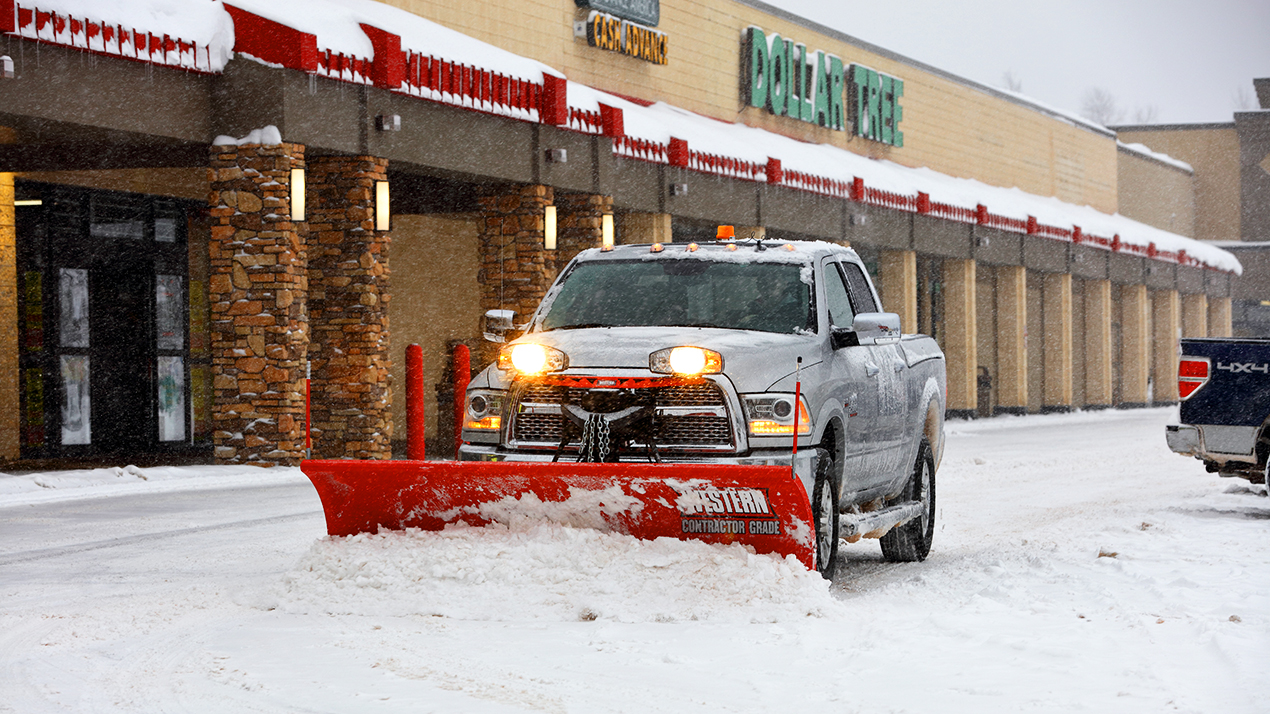
When you’re growing your business—getting new clients is a huge focus. But not all clients are the same. Their unique snow and ice control needs require different billing practices and different levels of service—all things you need to be able to keep track of to properly service them throughout the winter season. As you add clients to your winter services portfolio, keep the things below in mind to diversify your business.
#1 Diversify your Billing Types—Per Plow vs Flat Winter Fee
There are two main billing contract types to use when you sign up new snow and ice control clients. They are Monthly/Seasonal or Pay-Per-Plow contracts.
- Monthly/Seasonal Contract: The client pays you a flat fee for the winter, regardless of the number of times you visit the property to provide services. This allows you to have a consistent income you can plan on whether you get heavy snowfall or not throughout the season. These contracts can be for the entire season, or be a hybrid that cover 5-7 events with any billable event beyond that converting to Pay-Per-Plow.
- Pay-Per-Plow: The client pays an hourly rate for the services you provide. They only pay when you deliver services. This can be a lucrative contract type in years when there is heavy snow and ice. For this contract type, it is important to understand what your fixed costs are throughout the season and know exactly how many events need to occur in order for you to break even. This will reduce your anxiety throughout the winter season.
The path to profitability is different for each snow and ice control company. But it’s a good rule of thumb to can organize your portfolio so you can cover your basic monthly expenses (overhead) with your monthly accounts and cover your labor costs with your Pay-Per-Plow accounts.
#2 Location & Geography Matters
When you are building your client portfolio, determine how far you are willing to travel to perform services. It’s good to set a radius around your hub and try to attract the types of properties you want to maintain within that circle. The farther you are away from your hub, the more time your crews will spend driving and the longer it will take for them to refill if they need to get more salt or supplies. If you choose to take clients that that are a fair distance from your hub, consider storing equipment on their site so your crews can go directly to the properties needing maintenance. This will make you more efficient and allow you to take on more clients.
Once you land a client, attract the properties that surround them to add efficiency to your business. You can also look at the common routes your crew takes to travel to your current clients. Work to attract the properties on these common routes to fill in billable services.
#3 Understand the Needs of your Clients
Winter weather is unpredictable and not all properties have the same schedule or needs. Understand the schedules and expectations of your commercial and residential clients—for each day of the week. Their schedules might not be the same day to day and therefore require different snow and ice control service levels on a Tuesday compared to a Sunday. Understanding these needs and expectations in advance will allow you to create a route when winter weather is on the way that prioritizes those clients that need service immediately versus those that can wait until later in the day.
For example, a winter storm hitting on a Sunday would make you prioritize a church with 8am services over the local dentist office that doesn’t open until 9am Monday morning. This level of detail will allow you to service your clients so they can safely welcome patrons when their businesses open.
If you choose to have residential clients, make sure you are clear when you will arrive to perform services. Most municipalities give property owners 24 hours to get their driveways and walkways clear of snow. However, their expectations might be that you will have their driveways clear before they leave for work or return home.
#4 Focus on Commercial Accounts
Residential accounts can be beneficial to someone who is starting out in the plowing business, but require a high quantity before becoming profitable. If you want to develop a lucrative snow and ice control business, you should place your focus on securing commercial clients. The margins on services for commercial properties is higher, allowing you the revenue needed to invest in your business and increase your efficiency. Approaching the owner of a business to quote winter services might be more difficult than working with your neighbors, but the payoff is greater as well.
#5 Grow Your Business Through Referrals
Once you have clients that you enjoy working with, ask for referrals. If you understand the needs and expectations of your customers and provide a high level of service, it should be easy for them to refer you to their circle of contacts. Many business owners are involved in local Chamber of Commerce groups and know many of the other local business owners. There’s a validation that comes with a referral that doesn’t translate as easily into a paid advertisement.
You can kick-start the positive word of mouth buzz your business receives by creating a referral program that benefits your current customers:
- Give your clients a discount on their services for every client they refer
- Ask for reviews on your Google Business Page or Facebook Business Page
- Incentivize your clients to leave you a video testimonial with their smart phones
- Ask if you can leave a sign at the properties you maintain, or put promotional flags on your snow guides with your business name and phone number
The best way to get new clients is to provide the highest level of service possible to your current clients. If you are targeted in how you reach out to prospects, you can create a diversified portfolio and then let it work for you through referrals. But realize that your clients are not all the same. And when you embrace those differences and ensure you have a diversified portfolio of clients, you can reduce your anxiety levels in the winter months.
Get the job done better and faster with the award-winning PILE DRIVER™ pusher plows with TRACE™ edge technology.
6 Ways to Better Handle Customer Complaints in the Snow & Ice Industry
Created October 23, 2017

As the snow season progresses, so will the number of complaints. But fear not. Complaints are a normal part of the service industry and shouldn’t be thought of in a negative way. In fact, these complaints are actually giving you an opportunity to turn a sour customer into a satisfied customer—maybe even a loyal one.
Here are six ways to help make that transformation:
1) Get Your Objectives in Order. Listen, then Solve.
People often assume a customer’s first objective is to get their problem fixed. However, sometimes they just need to vent, be heard, or simply get their emotions out. Whether it’s about the timeliness of their property being cleared, the quality of the job, or something you had no control over, let them get it out of their system so you can get to the point where they are ready to listen. Then you can move on to the secondary objective of solving the problem. If you handle the situation in that order, the problem should be much easier to solve.
2) Show Your Clients You Appreciate Their Feedback
Apologize once, upfront. Then give positive recognition by saying things like: “Thank you for bringing this to my attention,” or “Thank you for reaching out.” Always keep in mind that the customer didn’t have to come to you at all. He could have simply taken his business to your competitor. When a customer gives you the opportunity to recover their service, be grateful. There are a lot of snow removal services out there, and they could have simply taken their business elsewhere, but now you have another chance to make it right.
3) Don’t Become Defensive From Criticism
Snow removal services can be challenging, and wrangling Mother Nature is a tall order. It’s easy to defend your hard work and to point at the circumstances but, at least at this stage, it’s best to hear them out, keep the conversation calm and moving in a positive direction. You don’t have to agree with what they’re saying, but you do need to give them your undivided attention.
4) Acknowledge What is Important to the Client
Find out what that is and validate it. If a customer says you didn’t clear their property by a certain time, then that customer values speed and their schedule. You might say: “You’re right. You deserve quick, efficient service.” This way, you aren’t necessarily saying you didn’t provide it, but you’re validating what the customer values and acknowledging that you want to deliver it.
5) Learn to Manage Client Expectations
Now that you know what their problem is, your goal is to help solve it, but in a realistic way. Give them more details on how you go about your business, like explaining that you have a priority list of businesses first. Giving them a big picture idea of your responsibilities and adding context to their complaint may help them understand your business better.
6) Show Clients You Care
Even if you feel the company did everything right, and if you can’t provide a solution on the spot, make sure you follow up in a timely manner. Maybe offer something as a gesture of goodwill or send a personalized thank-you note. Either way, you’ll be delivering the message that you’re a great company to do business with. To ensure that future problems are handled in the same professional manner, develop a protocol with your staff so they can take care of the situation as quickly as possible.
Remember: Your customer just wants the service they’re promised. If you approach complaints as opportunities to build loyalty, you can create customers for life. It can be hard to remember when you’re in a tense situation, but customers are essential to your business and, at the end of the day, you’re both on the same side.
Customers love when you can clear snow fast, efficient, and can stack snow high so that they have more room for parked cars, etc. Happy customers mean reduced complaints. Pushers are a great tool to get the job done, and done right.
Gross Vehicle Weight Rating and Why It’s Important
Created July 21, 2017
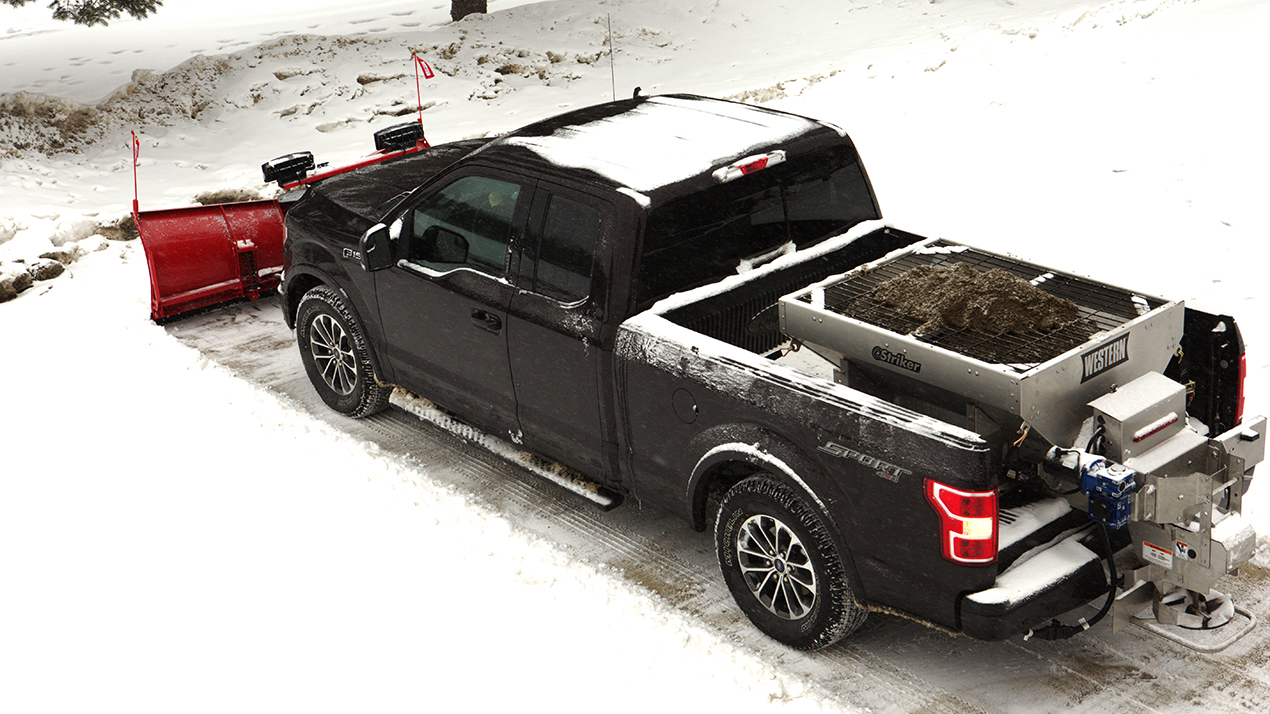
Gross Vehicle Weight Rating (GVWR) is quite possibly the most important truck statistic in the plowing industry. It refers to the total vehicle weight that the truck can handle while still operating safely, and it’s the basis for every aspect of how the truck operates. When you use plows, and especially spreaders, your truck will frequently approach its GVWR limit.
What’s the Big Deal If I Exceed my GVWR limit?
It’s Illegal: At the highest and most obvious level, it’s the law. If you exceed your GVWR and you get stopped and weighed, you’ll get a ticket. It’s not “just a number.” GVWR limits exist for a reason. The manufacturer put that particular number down on the data plate because they want to keep you and others safe.
It’s Dangerous: If you go over your weight limit, your truck’s brakes may not stop the vehicle in a short enough distance to ensure that you won’t have an accident, given human reaction time. Also, if you see something in the road and have to maneuver suddenly to avoid it, your truck may not handle as expected. The GVWR is the last safe point where you can be sure that if you are properly alert and following traffic laws, you will not endanger pedestrians, property or other drivers.
It’s Damaging to Your Truck: In general, as you move down the road with a load above your GVWR, you are putting a strain on your truck’s wheel bearings, causing them to wear out faster. You can also cause long-term damage to the steering system. In severe cases, the added weight could increase the internal tire pressure to the point that you could have blowouts. Hitting bumps in the road could bottom out your suspension and damage springs, as well as create a number of other problems, all of them expensive.
It’ll Shorten Your Truck’s Life: Exceeding the recommended weight on your truck puts a strain on the entire truck: the frame, suspension, body and every other part of the truck. Over the long term, metal flexes and fatigues at a much higher rate when excessive weight is applied.
However long your truck was going to last you before you overloaded it, you can be sure that driving around with too much weight is going to shorten the life of your truck.
For more information on how to determine your gross vehicle weight rating, visit your local WESTERN dealer.
Snow & Ice Control Business Success With Facebook Advertising
Created May 20, 2016

One of the most powerful and cost-effective ways for a business to advertise online is through social media. Social media advertising helps businesses find potential clients by advertising based on various criteria such as users’ interests, location and demographic. Social media advertising proactively targets relevant users by displaying ads in their news feeds regardless of whether or not they are actively searching for your products and services. Facebook advertising offers advanced targeting and reliable tracking tools to measure the success of your campaigns, such as impressions (number of people who saw your ad), clicks to your website, “likes,” shares, comments, etc.
Ads can be found on most social media platforms, but the platform that leads the digital empire is Facebook. With 1.65 billion active daily users, including 989 million active daily users on mobile, Facebook leads the charge in social media users. If you are a business owner or a marketer who is still doubtful about the impact of Facebook for your business, here are some reasons why Facebook advertising is so effective.
1. Facebook’s Popularity = Opportunity
Facebook is the second most popular website in the world next to Google. Can you just imagine having the potential to reach even just a fraction of its 1.65 billion users? With Facebook, you can maximize your reach, by putting your ads in front of your highly targeted prospects, for a fraction of the cost of other forms of advertising media.
2. Advanced Targeting Options
Facebook builds a profile of users’ interests based on information they have provided on their own personal page, posts that they “like”, the Facebook pages they follow and what they are responding to on Facebook through their replies, comments, and shares. All that data allows advertisers the ability to target well beyond general demographics (male, female, age) and geographic data (where they live). With Facebook, you can target at a much deeper level by focusing on interests, behaviors and connection-based targeting. For example, you might want to target people based on their interest in snow plowing, landscape maintenance, pickup trucks, four-wheeling, etc. By building these deeper layers of targeting, you can connect with your ideal audience.
3. Track Your Success
Unlike a lot of traditional advertising placements (TV, radio, print), Facebook advertising gives us the ability to understand how people are reacting to your ads. Facebook allows you to easily track who is clicking on your ads, how many people are liking your page, how many people are clicking to your website, or watching your videos.
4. Multiple Objective Options
Depending on your advertising goals, Facebook offers a long list of objectives to set up your campaigns. Following is a list of some Facebook options that you might find helpful to get started:
- Local Awareness: serve ads to people located physically near your business
- Page Likes: grow your page following and drive new fans to your page
- Page Post Engagement: make sure more people are seeing your content when you post it to your page
- Video Views: get more people to watch the video content you post
- Website Clicks: drive more fans to your company’s website
5. Find and Connect with a Local Audience
Local business ads are great for serving ads to people in your area. With the “local awareness” objective, you can target people who live within a certain radius of your business – for example, I only want people within 30 miles of my business to see this ad. This ad format allows your local prospects to learn the unique value your business offers, including your proximity to them, a map to your business, and even allows them to make a direct phone call right from your ad, on mobile devices.
6. Reach Your Mobile Audience
In 2014, mobile usage surpassed desktop usage. In the first quarter of 2016, Facebook reported 90% of total Facebook users access it on mobile. Every year more and more snow and ice control users are accessing product information on mobile devices. Facebook ads give you the ability to put your message right in the palm of their hands.
7. Advertising On Facebook Is Cost Effective
With the tools available from Facebook, you can narrow down who you are targeting. You can find people who care about your business and the value your business can offer them, and you only pay when you get results! Depending on your desired actions, such as page likes, video views, engagement, and visits to your website, you can see results for under $1.00 per action. Better yet, you can set daily spend budgets or even maximum spend budgets so you never spend more than you planned.
8. Creative Flexibility
Facebook makes it very easy to update ad copy or images quickly. This allows you to test different image and text options to see what ads are performing the best.
If you were considering digital advertising, Facebook marketing would be a great place to start. With a very large and active audience you have the ability to target exactly who you want to see your ads, define your goals, track the result, and have creative freedom – all for minimal costs compared to other platforms. Once you get started, you’ll discover it’s easier than you think!
